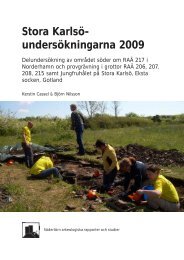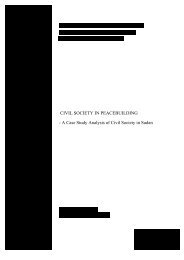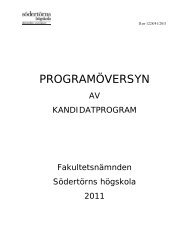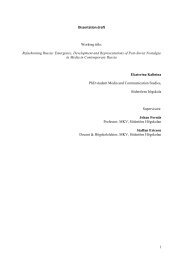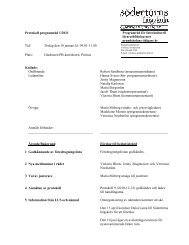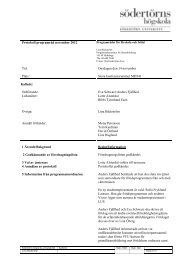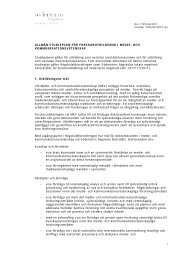Underlying Reasons for the Persistence of Female Genital Mutilation
Underlying Reasons for the Persistence of Female Genital Mutilation
Underlying Reasons for the Persistence of Female Genital Mutilation
Create successful ePaper yourself
Turn your PDF publications into a flip-book with our unique Google optimized e-Paper software.
is in no way based on religious beliefs and is <strong>the</strong>re<strong>for</strong>e not connected to Islam, Christianity or<br />
any o<strong>the</strong>r religion. FGM is a cross-cultural and cross-religious ritual and it is based on ancient<br />
myths and traditions within different religious and ethnic groups 11 .<br />
1.2 Background <br />
Patterns <strong>of</strong> FGM prevalence emerge when countries are grouped by region. For example, in <strong>the</strong><br />
countries <strong>of</strong> nor<strong>the</strong>ast Africa (Egypt, Eritrea, Ethiopia and Sudan) 80 to 97 percent are<br />
circumcised while in East Africa (Kenya and Tanzania) it ranges from 18 to 32 percent 12 .<br />
In Tanzania FGM is traditionally per<strong>for</strong>med by women. According to Tanzanian health statistics<br />
15 percent <strong>of</strong> women between <strong>the</strong> ages <strong>of</strong> 15 to 45 have undergone some <strong>for</strong>m <strong>of</strong> genital<br />
mutilation <strong>the</strong> years <strong>of</strong> 1997-2009 13 . The practice varies significantly by region and ethnicity. In<br />
rural areas almost 18% <strong>of</strong> women are circumcised. The most affected areas include Manyara,<br />
Dodoma, Singida, Arusha and Kilimanjaro regions.<br />
The government <strong>of</strong> Tanzania launched a campaign against FGM in <strong>the</strong>se regions in 1971 when<br />
complications such as sepsis, bleeding and deaths among women alarmed <strong>the</strong> public. A<br />
workshop was held in Dar-Es Salaam in 1986 where <strong>the</strong> proposal <strong>for</strong> a campaign to abolish FGM<br />
was decided upon. This led to a fact-finding survey by <strong>the</strong> women’s section <strong>of</strong> <strong>the</strong> institute <strong>of</strong><br />
Adult education in 1988-89. This resulted in <strong>the</strong> production and distribution <strong>of</strong> a booklet on<br />
FGM called “Dangers <strong>of</strong> <strong>Female</strong> Circumcision”, written in Kiswahili 14 .<br />
Many international treaties and conventions condemn harmful traditional practices, such as <strong>the</strong><br />
Convention on <strong>the</strong> Rights <strong>of</strong> <strong>the</strong> Child (CRC) and <strong>the</strong> Convention on <strong>the</strong> Elimination <strong>of</strong> All<br />
Forms <strong>of</strong> Discrimination against Women (CEDAW). Both treaties have been ratified by <strong>the</strong><br />
government <strong>of</strong> Tanzania 15 . It was not until 1998 however, that <strong>the</strong> Tanzanian government<br />
en<strong>for</strong>ced a law against FGM. The law is a part <strong>of</strong> “<strong>the</strong> sexual <strong>of</strong>fences special provisions act” and<br />
11 Ibid. <br />
12 These numbers should be interpreted with care since <strong>the</strong>y represent national averages and does not reflect <strong>the</strong> <br />
<strong>of</strong>ten marked variation in prevalence in different parts <strong>of</strong> a given country. UNICEF, Tanzania DHS 1996, Tanzania <br />
DHS 2004-‐2005 <br />
13 UNICEF 2011, Tanzania FGM/C country pr<strong>of</strong>ile <br />
14 Dorkeeno, cutting <strong>the</strong> rose. p. 113 <br />
15 United Nation 2011, Treaty collection, CEDAW, CRC <br />
3



